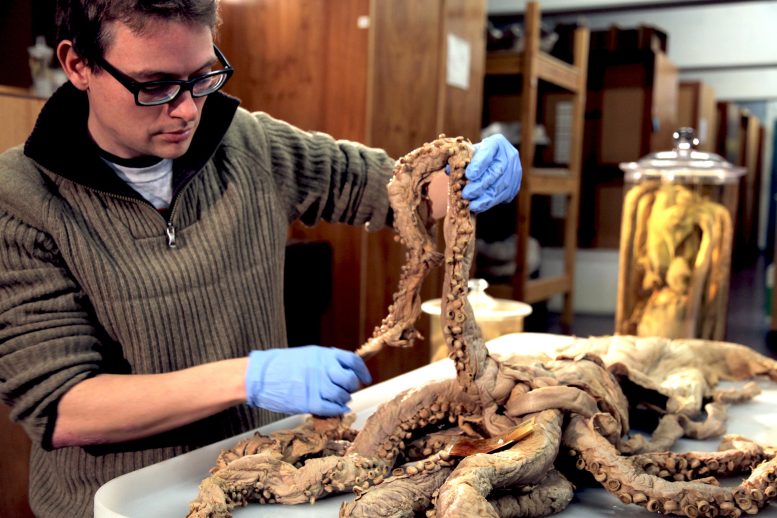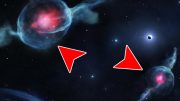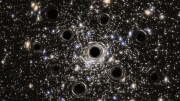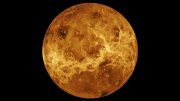
The giant squid is not only a fiction figure of Jules Verne and Herman Melville. It is also one of the most enigmatic animals on the planet. Now DNA-researchers at the University of Cophagen have found out that it is the same species all over the deep oceans of the planet. Credit: Anders Drud and Frederik Wolff Teglhus, University of Copenhagen, Denmark
In a newly published study, researchers examine the mitochondrial genome diversity of 43 giant squid samples collected from across the range of the species, finding that there is only one global species of giant squid, Architeuthis.
The giant squid is one of the most enigmatic animals on the planet. It is extremely rarely seen, except as the remains of animals that have been washed ashore, and placed in the formalin or ethanol collections of museums. But now, researchers at the University of Copenhagen leading an international team, have discovered that no matter where in the world they are found, the fabled animals are so closely related at the genetic level that they represent a single, global population, and thus despite previous statements to the contrary, a single species worldwide.
Thus the circle, that was first opened in 1857 by the famous Danish naturalist Japetus Steenstrup as he first described the animal, can be closed. It was Steenstrup who realized this beast was the same animal that in the past gave rise to centuries of sailors’ tails, and even more recently became immortalized by writers such as Jules Verne and Herman Melville, by demonstrating that the monster was based in reality, and gave it the Latin name Architeuthis dux.

Study reveals that giant squid such as this one are genetically similar throughout the world. Credit: David Paul/Museum Victoria
It was less than 1 year ago, that the giant squid, Architeuthis dux, was first filmed alive in its natural element. Taken at a depth of 630m (2,100ft) and after 100 missions and 400 hours of filming, the footage was captured by a small submarine lying off the Japanese island of Chichi Jima – near the famous Iwo Jima that was the scene of some of the bloodiest fighting between Japan and the USA in the Second World War.
Now, PhD student Inger Winkelmann and her supervisor Professor Tom Gilbert, from the Basic Research Center in GeoGenetics at the Natural History Museum of Denmark, Copenhagen University, have managed to place new bricks into the puzzle of this giant 10-armed invertebrate, that is credibly believed to grow up to 13 meters (43 feet) long and way over 900 kg (2,000 lb).
And the two scientists’ conclusions are: No matter what a sample looks like, it’s one species all over the deep oceans of the planet.
Sinking to the depths
PhD student Inger Winkelmann says about these findings, that are published in the esteemed British journal, the Proceedings of the Royal Society B:
“We have analyzed DNA from the remains of 43 giant squid collected from all over the world. The results show, that the animal is genetically nearly identical all over the planet, and shows no evidence of living in geographically structured populations. We suggest that one possible explanation for this is that although evidence suggests the adults remain in relatively restricted geographic regions, the young that live on the ocean’s surfaces must drift in the currents globally. Once they reach a large enough size to survive the depths, we believe they dive to the nearest suitable deep waters, and there the cycle begins again. Nevertheless, we still lack a huge amount of knowledge about these creatures. How big a range do they really inhabit as adults? Have they in the past been threatened by things such as climate change, and the populations of their natural enemies, such as the planet’s largest toothed whale, the sperm whale that can grow up to 20 m (66 ft) in length and 50 tons? And at an even more basic level…how old do they even get and how quickly do they grow?”
The giant squid is not only a fiction figure of Jules Verne and Herman Melville. It is also one of the most enigmatic animals on the planet. Now DNA-researchers at the University of Cophagen have found out that it is the same species all over the deep oceans of the planet. Credit: Anders Drud and Frederik Wolff Teglhus, University of Copenhagen, Denmark
The kraken and the seamonk
These new results about the mysterious giant squid are released, fittingly enough, on the 200th anniversary of the Danish naturalist and polymath, Japetus Steenstrup (born in 1813).
At the age of 44, in 1857, it was Steenstrup who saw that many of the monsters of sea-legend were related to fragments that he had been sent of what appeared to be a giant squid, and in doing so described the species for the first time and removed any hope that sea monsters such as the Kraken and sea-monk really existed (although nevertheless, similar monsters still inspired beasts in literature and even films throughout the 20th century, including Tolkein’s Lord of the Rings in 1957).
Professor Tom Gilbert, who led the team that undertook the research, says:
“It has been tremendous to apply the latest techniques in genetic and computational analyses, to follow up on Steenstrup’s scientific research 146 years after he started it. But it’s also been a fantastic experience to work with the giant squid as a species, because of its legendary status as a sea monster. But despite our findings, I have no doubt that these myths and legends will continue to get today’s children to open their eyes up – so they will be just as big as the real giant squid is equipped with to navigate the depths.”
Reference: “Mitochondrial genome diversity and population structure of the giant squid Architeuthis: genetics sheds new light on one of the most enigmatic marine species” by Inger Winkelmann, Paula F. Campos, Jan Strugnell, Yves Cherel, Peter J. Smith, Tsunemi Kubodera, Louise Allcock, Marie-Louise Kampmann, Hannes Schroeder, Angel Guerra, Mark Norman, Julian Finn, Debra Ingrao, Malcolm Clarke and M. Thomas P. Gilbert, 22 May 2013, Proceedings of the Royal Society B.
DOI: 10.1098/rspb.2013.0273
The work was undertaken in collaboration with researchers around the world, including scientists in Australia, New Zealand, Japan, Spain, Portugal, USA and Ireland.









Be the first to comment on "Monster From the Deep Hits the Surface: Giant Squid Throughout the World Are Genetically Similar"